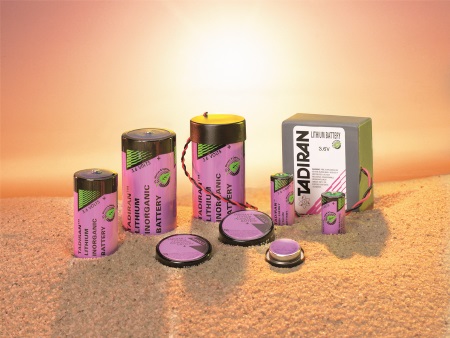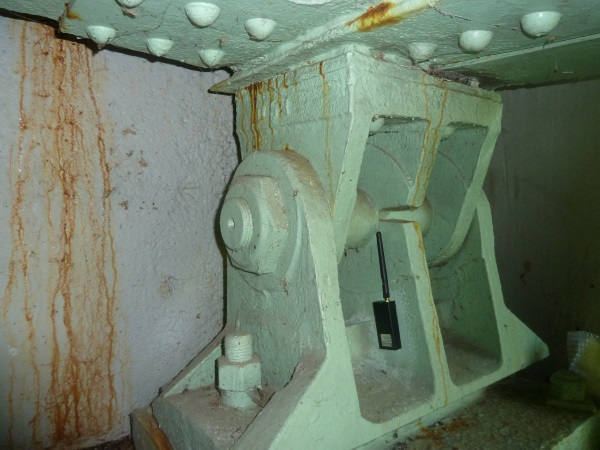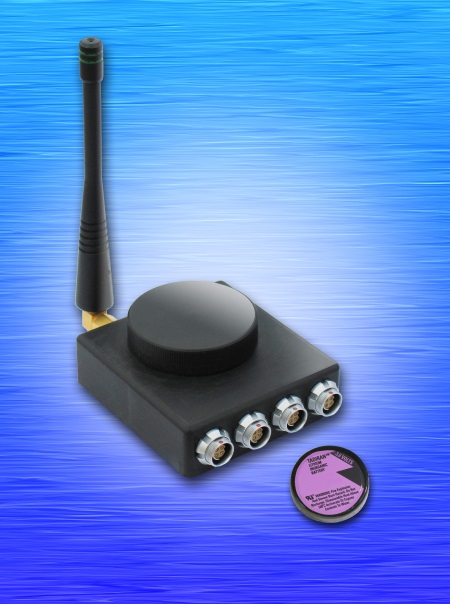By SOL JACOBS,
VP and General Manager,
Tadiran Batteries,
www.tadiranbat.com
America’s bridge, tunnel, and rail infrastructure will soon undergo a much needed upgrade with the recent passage of $325 billion in federal funding. Remote wireless sensors will play a major role in this revitalization effort by identifying potentially dangerous conditions and by monitoring the status of critical infrastructure.
The U.S. Congress recently passed a major Highway and Transportation Funding Act that authorizes roughly $325 billion in funding for major construction and repair projects needed to improve our nation’s deteriorating infrastructure.
According to the American Society of Civil Engineers (ASCE), this work is critically needed as nearly nine in ten of our nation’s bridges are considered structurally deficient. America’s patchwork electrical grid is of equal concern, as this antiquated network of transmission lines, substations, and transformers has been unimproved for decades while growing energy demand keeps placing ever increasing stress on the nation’s electrical grid, posing a threat to our nation’s economic security.
Battery-powered remote wireless technology will play a major role in many bridge and tunnel construction projects by providing valuable insight into the real-time status of this critical infrastructure. The need for more rigorous wireless monitoring was underscored by the tragic collapse of I-35W bridge in Minneapolis, MN in 2007, which killed 13 people, injured 145 more, and disrupted travel throughout the region. Remote wireless sensors can help prevent similar tragedies by providing data that warns of possible structural decay that is typically caused by temperature, humidity, strain, or pressure deformation.
Remote wireless sensors provide a highly cost effective solution by eliminating the costly expense of hard-wiring devices to the electrical power grid, which can cost as much as $100 per linear foot. Hard-wiring also introduces unpredictable expenses associated with permits and regulations, which can be especially problematic in environmentally sensitive locations.
Battery-powered remote wireless sensors also enhance worker safety by eliminating the need for special harnesses and scaffolding needed to reach hard-to-access locations, as the expense associated with such high risk maintenance work far exceeds the cost of the battery itself.
Primary lithium batteries
The vast majority of remote wireless devices are powered by bobbin-type lithium thionyl chloride (LiSOCl2 ) batteries, which are especially well suited for long-life applications that draw low average daily current. LiSOCl2 chemistry offers high capacity, high energy density, and an extended temperature range of –55° to +85°C.

Bobbin-type LiSOCl2 batteries also deliver long battery life and deliver a self-discharge rate of less than 1% per year, thus permitting up to 40-year operating life on a single battery. However, such long life is not a guaranteed certainty, as lesser grade LiSOCL2 batteries can have an annual self-discharge rate as high as 3%, thus reducing operating life to as little as 10 years, which significantly increases the total cost of ownership. High self-discharge can be caused by using inferior quality of raw materials or by the processes used to manufacture the cell.
Advanced wireless comms requires high pulses
Standard bobbin-type LiSOCl2 batteries are designed for low rate applications and cannot deliver the high pulses required to actuate advanced two-way communications and/or remote shut-off capabilities. As a result, these batteries need to be modified by combining them with a hybrid layer capacitor (HLC). The standard LiSOCl2 battery delivers the low continuous background current required for long life, while the HLC acts like a rechargeable battery to deliver the high pulses required to initiate data interrogation and transmission.
Supercapacitors can also be used to deliver high pulses, but are not generally recommended for industrial grade applications due to their inherent limitations, which include a high self-discharge rate (up to 60% per year) and a limited temperature range (which prohibits their use in extreme environments). A supercapacitor made up of two 2.5 V capacitors also requires balancing circuits, which adds self-discharge and expense.
Here are two real-life examples using bobbin-type LiSOCl2 cells to power remote wireless infrastructure monitoring devices:
Monitoring stress points on bridges
SenSpot wireless sensors, manufactured by Resensys, collect and transmit vital data that monitors stress, tilt, and other conditions that can jeopardize bridge safety. SenSpot sensors require a robust power supply that can deliver high pulses to support advanced wireless communications while also offering tremendous flexibility (as no two bridges are the same). Long-term reliability is also a concern, since the major structural components of a bridge are often highly inaccessible, making it prohibitively expensive to access and replace the batteries. Bobbin-type LiSOCl2 batteries enable SenSpot wireless sensors to operate maintenance-free for decades to enhance the safety of critical bridge infrastructure.

Fig. 1: SenSpot wireless sensors by Resensys, collect and transmit vital data that monitors stress, and tilt. Long-term operation and battery reliability is a major concern because the bridges make access to the sensors very difficult.
Monitoring tunnels for structural integrity
Invocon manufactures multiple-input, tiny, enhanced wireless instrumentation systems (MITE-WIS), which are small, self-powered sensors/transmitters that monitor repaired concrete sections within tunnels. MITE-WIS units are embedded into concrete repair patches, thus eliminating the need for obtrusive power cables to pass through the concrete and create weak points within the primary tunnel wall. The units serve to identify potential structural failures by sensing strain variations across the boundaries of concrete patches. LiSOCl2 batteries provide up to two years of service life at a sampling rate of three separate channels per minute. Each unit can store up to three months of data that is downloaded during monthly maintenance procedures.

Fig. 2: Self-powered sensors / transmitters that monitor repaired concrete sections in tunnels are embedded into concrete repair patches to identify potential structural failures and need batteries like LiSOCl2 that can provide up to two years of service life.
Energy harvesting growth
While primary lithium batteries are most often selected to power wireless devices, there are also numerous applications that can be well served by energy harvesting devices that use rechargeable lithium-ion (Li-ion) batteries to store the harvested energy.
Standard consumer-grade rechargeable Li-ion batteries are not well suited for long-term deployment because they have a relatively short life expectancy of 5 years and 500 recharge cycles, along with a limited temperature range. The alternative is to use an industrial grade rechargeable Li-ion battery that can operate for up to 20 years and 5,000 recharge cycles, while also offering a wider temperature range than standard rechargeable Li-ion batteries.
These industrial grade Li-ion batteries are being used by Southwire Company, for use in line/connector sensors that continually monitor the status of electrical power transmission lines. The line/connector sensor mounts directly to a bare overhead transmission conductor, where it measures conductor temperature, sag on the transmission line, and electrical current on the line.
Energy harvested from the magnetic field of the electrical line supplies enough energy so readings can be transmitted every 30 seconds to a base station using 2.4 GHz RF communication. The line/connector sensor requires sufficient line current to fully recharge, so the energy harvesting device needs to be supported by a AA-size industrial grade rechargeable Li-ion battery to permit roughly 45 days of continuous sensor operation, even during times when there is no current being produced or when the strength of the magnetic field drops below the threshold required for energy harvesting. The use of a 20-year industrial grade Li-ion battery results in a highly economical, maintenance-free, long-term solution.
For remote wireless devices that require a reliable, long-term power management solution, design engineers can choose between bobbin type LiSOCl2 batteries and industrial grade Li-ion batteries to provide decades of maintenance-free operation, thereby reducing the total cost of ownership.
Advertisement
Learn more about Tadiran





